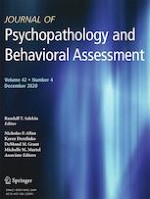28-05-2020
In-Session Involvement in Anxious Youth Receiving CBT with/without Medication
Gepubliceerd in: Journal of Psychopathology and Behavioral Assessment | Uitgave 4/2020
Log in om toegang te krijgenAbstract
Although in-session factors of CBT for youth anxiety (e.g., youth involvement; therapist behaviors) have demonstrated significant associations with treatment outcomes, no study has examined the role of concurrent selective-serotonin reuptake inhibitors (SSRI) on in-session behavior affecting youth outcomes. The combination of SSRI and CBT have demonstrated robust outcomes over either treatment alone. Research has also neglected to examine in-session behavior based on treatment phase (i.e., psychoeducation, exposure) and the association between in-session factors and treatment outcome. Youth (N = 190) were participants in the Children/Adolescent Anxiety Multimodal Study (Walkup et al. New England Journal of Medicine, 359, 2753-2766, 2008) who completed CBT; of these, n = 94 received concurrent sertraline. Tapes of psychoeducation/skill-building (first half) and exposure sessions (second half) were rated by reliable coders for positive youth involvement (e.g., participation, understanding), negative youth involvement (e.g., safety-behaviors, negative affect), and therapist behaviors. Youth and therapist in-session behaviors were examined as predictors of the trajectory of anxiety outcomes using multilevel modeling. Medication (sertraline) was examined as a moderator. Results indicated that positive and negative youth involvement in CBT was significantly associated with outcomes. Positive youth involvement during psychoeducation and exposure sessions predicted better outcomes, and negative youth involvement during psychoeducation sessions predicted less favorable outcomes. Sertraline did not moderate these findings. Therapist behaviors were not significantly associated with outcomes, likely due to limited variability and low frequency of observed behaviors. Youth in-sessions behaviors are associated with treatment outcomes in anxiety treatment. However, medication does not appear to have a differential impact on youth in-session behaviors.
